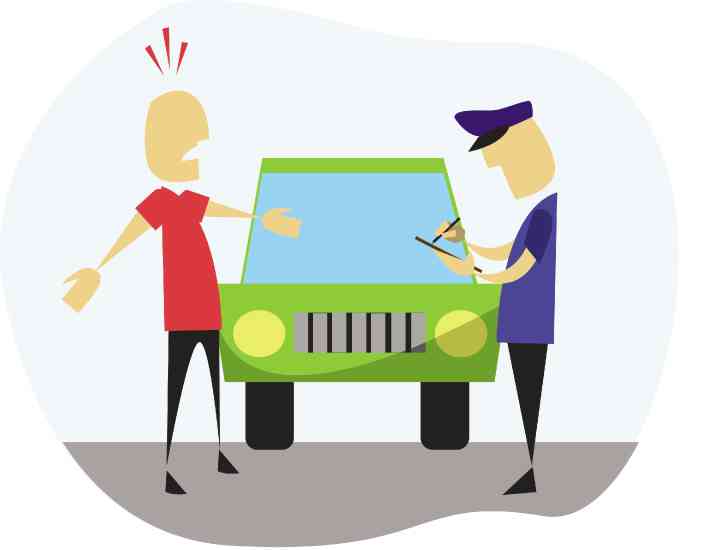The 5 vaguest traffic violations, and why you must question them no end
If you’ve been driving in the streets of Metro Manila for some time, you’ve probably been apprehended at least once for any or a combination of these violations: “Overspeeding” or “speeding,” “swerving,” “abrupt lane change,” and “reckless driving.” And you’ve most likely paid dearly for that when you retrieve your confiscated license.
But a legal expert on traffic laws and regulations says these so-called violations often cited by our traffic enforcers just don’t ring clear, and at best offer the hapless driver and the confused motoring public vague terminologies that become subject to wildly varied interpretations.
Lawyer Robby Consunji, Top Gear Philippines’ columnist, ranted in his Facebook account a few days ago how these traffic citations “fail to convey a legal limit.”
The consequence, he explains, is that: “When the traffic enforcer or authorities deviate from the technical language of the law, there is too much leeway for the prohibited behavior of the motorist (and the issuance of a traffic ticket).”
In a follow-up interview with this writer, Consunji then stressed the importance of placing legal labels on citations and traffic terminologies.
Article continues after this advertisement“We need to change the attitude of drivers to accept that the road rules exist for reasons of safety. Since the enforcement of the law is selective and seasonal, drivers do not see the importance of conforming. When the penalty is negotiable and punishment is remote, the drivers are not scared of violating road rules. The legal label exists to reflect a technical intent; not many traffic enforcers understand (or have experienced from the driver’s seat) the law and regulations; match them to drivers who also have not studied the law, and the chaos continues,” he quipped.
Article continues after this advertisement“Overspeeding does not exist,” Consunji pointed out.
“To be technical, the offense is ‘driving over the speed limit.’ The prohibited nature of the offense is not conveyed by the non-technical term ‘overspeeding.’” Consunji reiterated that traffic citations must emphasize the speed limit on that stretch of road where the violation was apparently committed.
“’Speeding’ merely connotes a rate of movement, and conveys no prohibition,” Consunji added.
Bingen Mendezona, a retired law enforcement officer from a Northern California Sheriff’s Office whom Consunji described as having a good insight on law enforcement, reacted to Consunji’s Facebook post, saying that “speeding violations actually should be a) ‘unsafe speed’, b) ‘posted speed,’ and c) ‘prima facie’ speed for areas like residential streets and school zones.”
“Traffic enforcement is mainly about safety. One can be ‘traveling at unsafe speeds’ even if he’s going below the ‘posted speed’ if the enforcer feels the speed is ‘unsafe for the prevailing conditions’ such as a heavy downpour,” Mendezona added.
As for “swerving,” the Metropolitan Manila Development Authority (MMDA) website clarified that “swerving is not a traffic violation per se. It is defined as a movement wherein vehicles shift from a lane to another. However, it can constitute the offense of reckless driving if it is done without precautions (e.g. swerving in an abrupt and careless manner, swerving without the use of signals, swerving across solid lines). Swerving can also constitute the offense of Disregarding Traffic Signs if there are signs present that explicitly prohibit swerving in the area.”
Consunji told this writer he believes “swerving” would be “another non-technical and layman’s term” open to subjective interpretations by traffic enforcers, prompting him to recommend that the term “needs to be researched.”
“In ordinary use, it means the abrupt change of lane; then, MMDA refined it to a change in several lanes. ‘Swerving’ is simply an unsafe change of lane,” said Consunji.
“It is possible that a super slow lane change over a long distance of road and a span of time is more dangerous than an abrupt lane change; at one point it becomes the violation of straddling two lanes or a failure to keep to a lane,” said Consunji.
As for “reckless driving,” well, let’s just say politics can muddle up this kind of citation.
“The term has parameters for acceptable standards of care. The problem is that standard of care (or safety) has been diluted by poor vehicle standards, lack of driver and pedestrian education, poor road engineering, poor enforcement of road rules, poor enforcement of penalties and fines, poor and slow judicial system, and a strong feudal lord (barangay captain, kagawad, mayor, vice mayor, councilor, governor, congressman, senator, general, etc.) who will meddle and bail out the erring driver!”
